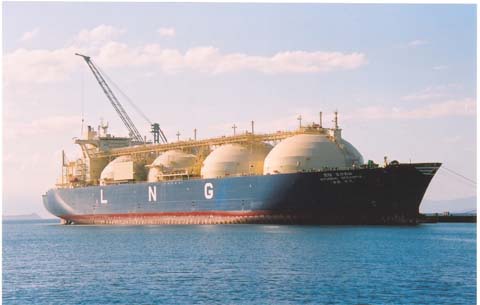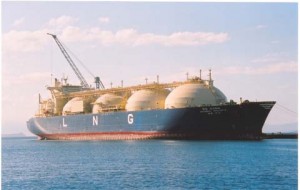Israeli Military Strikes Yemen’s Red Sea Port of Hodeidah
Israel said it struck a military infrastructure site in its latest attack on Yemen's Houthi movement at the Red Sea port of Hodeidah on Tuesday.

 Houston: “Domestic ships in North America have three options to meet new emissions control regulations; install CO2 scrubbers, burn low sulphur fuel or switch to LNG fuel for the ship’s propulsion,” says Kenneth Vareide, director of operations for DNV North America Maritime.
Houston: “Domestic ships in North America have three options to meet new emissions control regulations; install CO2 scrubbers, burn low sulphur fuel or switch to LNG fuel for the ship’s propulsion,” says Kenneth Vareide, director of operations for DNV North America Maritime.
DNV’s new report, Greener shipping in North America, proposes that LNG l is the most efficicient and economical way to meet air emissions requirements in the US and Canada that take effect in August 2012. Environmental Control Areas (ECA) will gradually be enforced along the North American coastlines. They will have full force in 2015 and 2016, leaving shipowners a limited number of options for modifications to their ships if they want to continue trade in North America.
Says Kenneth Vareide, “A LNG fuelled propulsion plant may add about $3.6 million to the cost of a typical domestic cargoship, however, over the operating life of the vessel, at today’s gas rates, LNG fuel would save more than $4 million over CO2 scrubbers and $12 million for low sulphur fuel.”
Specifically, the use of LNG fuel for a ship would reduce nitrous oxide (NOx) emissions by 85-90%, sulphur dioxide (SO2) and particulate matter by almost 100%, and it would result in 15-20% less greenhouse gas emissions.
Best and most cost-efficient
DNV’s report is the first study of US and Canadian domestic shipping and recommendations to meet new environmental legislation for North America. The report says that implementing LNG fuel on a significant portion of the fleet is the best and most cost-efficient solution for reducing environmental emissions in North America.
LNG is particularly an attractive alternative for vessels with a fixed trading pattern, which should fit well with the biggest segments; ferries, offshore support vessels and tug/push boats. Besides, much of the coastal trade in the US is fixed in its trade pattern and we have been in contact with several companies that are considering LNG for newbuildings and conversions,” says Kenneth Vareide.
The report covers:
* North American shipping statistics
* New environmental legislation for ship emissions in North America
* LNG’s economic performance
* LNG’s environmental performance
* LNG technology
* LNG safety
* LNG availability
Read the DNV report:
http://www.dnv.com/resources/reports/

Sign up for gCaptain’s newsletter and never miss an update

Subscribe to gCaptain Daily and stay informed with the latest global maritime and offshore news


Stay informed with the latest maritime and offshore news, delivered daily straight to your inbox
Essential news coupled with the finest maritime content sourced from across the globe.
Sign Up